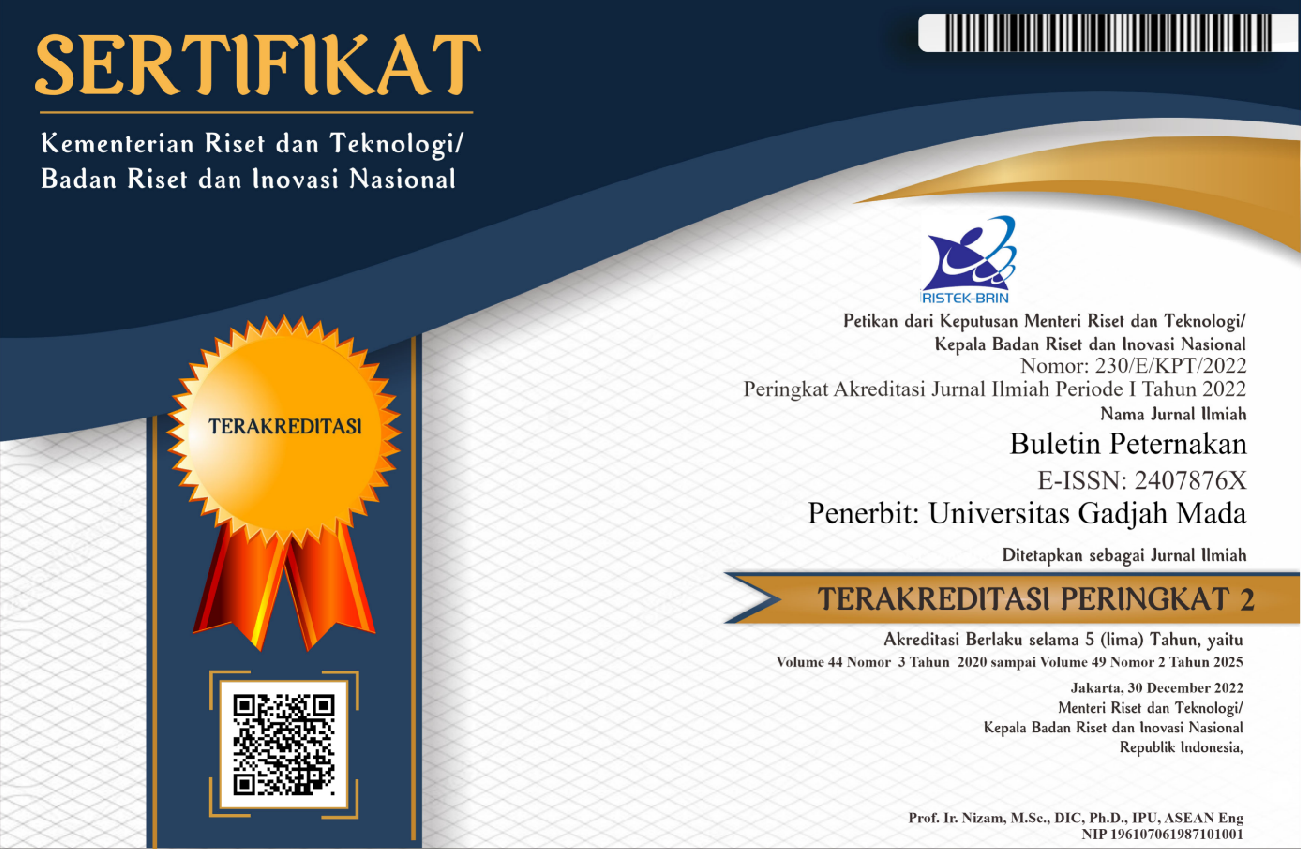EFFECT OF RESIDUAL ROCK PHOSPHATE AND BIOFERTILIZERS (RHIZOBIUM AND BIOPHOSPHATE) AND THEIR COMBINATIONS ON THE PRODUCTIVITY OF Stylosanthes guianensis CIAT 184
Johanna Lucia Amakali(1*), Djoko Soetrisno(2), Subur Priyono Sasmito Budhi(3)
(1)
(2)
(3)
(*) Corresponding Author
Abstract
The purpose of this research was to evaluate the agronomic effectiveness of rock phosphate, biological fertilizers (Rhizobium and bio-phosphate) and their combinations on dry matter (DM) production, nutrient content and in vitro dry matter digestibility (IVDMD) of Stylosanthes guianensis CIAT 184. This research was conducted at Forage and Pasture Laboratory, Universitas Gadjah Mada, Yogyakarta, Indonesia from February – October 2010. A strip plot design which consisted of two fertilizer factors with three (3) replicates was used. The first factor was the horizontal factor and consisted of four levels of biological fertilizers (Rhizobium and bio-phosphate) namely: M0 = control, M1 = Rhizobium (0.5 g/plot), M2 = bio-phosphate (0.6 g/plot) and M3 = combinations of Rhizobium and bio-phosphate. The second factor was the vertical factor and consisted of three levels of rock phosphate, namely: P0 = control, P1 = 250 kg/ha (32.5 P kg/ha) and P2 = 500 kg/ha (65 P kg/ha). Defoliation was carried out every three months for 9 months. Results of the study showed that there was no significant difference in DM production (kg/ha) amongst treatments. Although the current research showed no significance difference amongs the treatments, DM production increased in the 2nd harvest (12.3%) and 4th harvest (7.1%) between P0 and P1. Combinations treatment P1M2 (21073.63 kg/ha) had the highest average DM production amongs treatments. Statistical analysis followed by Duncan’s new Multiple Range Test (DMRT), showed that rock phosphate can significantly (P<0.05) increase fiber production of Stylosanthes guianensis. It showed that treatment P1 increased crude fiber production by 12.2% from 5864, 47 kg/ha to 6580,19 kg/ha. In addition, tests further revealed that there was a difference between M1 and M2, but had no effect on M0. There was no significant effect on production (kg/ha) of crude protein, phosphorus, nitrogen free extract (NFE) and ash. In conclusion, treatments with rock phosphate and bio-fertilizers tend to increase productivity of Stylosanthes guianensis CIAT 184.
(Key words: Stylosanthes guianensis CIAT 184, Rock phosphate, Bio-phosphate, Rhizobium, and In vitro dry matter
digestibility)
Full Text:
PDFArticle Metrics
Refbacks
- There are currently no refbacks.
Buletin Peternakan (Bulletin of Animal Science) Indexed by:

This work is licensed under a Creative Commons Attribution-ShareAlike 4.0 International License.









